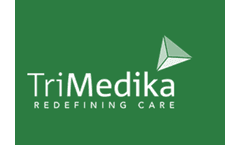Medical Infection Control Articles & Analysis
6 articles found
In the field of medical device manufacturing, the materials used in creating life-saving equipment must meet the highest standards of safety, reliability, and performance. Among these materials, fluoropolymer tubing has emerged as a critical component, playing a crucial role in various medical devices. Whether it’s for intravenous (IV) systems, catheters, or diagnostic equipment, ...
What is a Hospital Acquired Infection? A Hospital-Acquired Infection (HAI) (also know as a Healthcare-Associated Infection (HCAI) or nosocomial infection) is defined by WHO as ‘an infection acquired in hospital by a patient who was admitted for a reason other than that infection1‘. This includes infections acquired in the hospital but appearing after discharge, and also occupational ...
Hygiene is drummed into us from a young age. It usually starts with the more unsavoury lessons – like don’t pick your nose – and gradually migrates to the importance of showers, deodorant and good sexual health. It’s only when some of us dedicate themselves to caring for others do we fully appreciate how important hygiene is. In a good hospital robust infection control ...
ByDDC
Water is the main stimulus for the development of microorganisms, and its flow has an important role in the spreading of contaminants. In hospitals, the water distribution system requires special attention since it can be a source of pathogens, including those in the form of biofilms often correlated with resistance of microorganisms to various treatments. In this paper, information relevant ...
Hospital infection control requires recourse to a good quality equipment that not only removes dirt but also eliminates molds, bedbugs, allergens, and germs. Healthcare services are grappling the problem of maintaining sanitization on a daily basis, and one of the most useful tools in this regard is a dry vapor system. A dry vapor system built for hospital infection control should have the ...
Healthcare workers are, like patients, subject to illness from a variety of airborne pathogens common to hospital settings. This risk increases during construction and renovation, as these endeavors release dust as well as disease-inducing microbes into the surrounding environment. Since more than one in five workplace illnesses in private industry occur in a hospital setting , hospitals should ...






